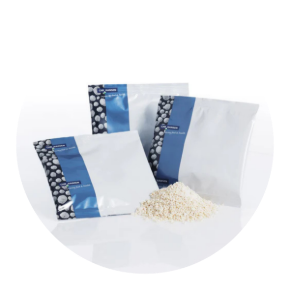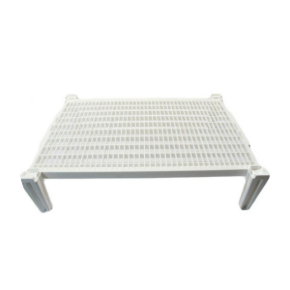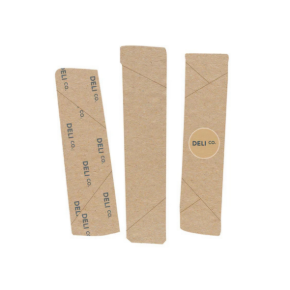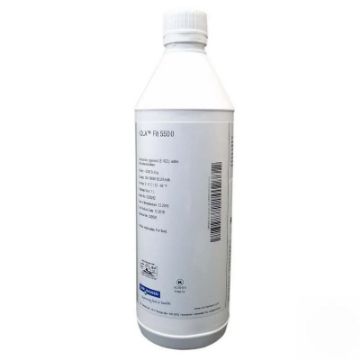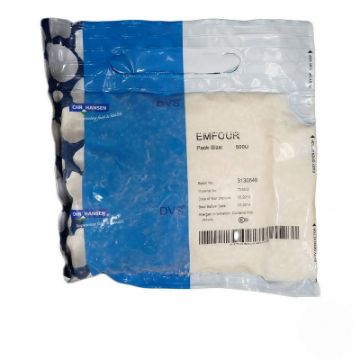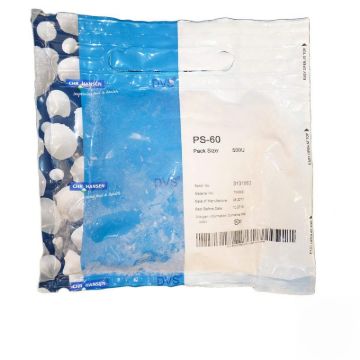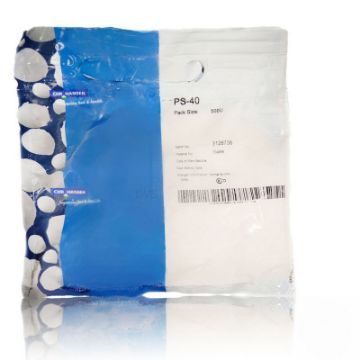Products tagged with 'Chr Hansen'
NOLA™ Fit 5500 Lactase, 1 L
NOLA™ Fit 5500 is a novel highly-purified and standardized liquid wide spectrum Bifidobacterium bifidum ß-galactosidase (lactase).
It is produced by submerged fermentation on a vegetable substrate using a selected strain of Bacillus licheniformis kept under contained conditions and not present in the final product.
The product hydrolyses lactose to a mixture of glucose and galactose.
The product is a premium lactase particularly suitable for fermented milks and cheese manufacture and to avoid off-flavor typically associated with lactose free UHT/ESL milk products.
EMFOUR Frozen 500 u
Thermophilic homofermentative culture blend.
In 1984 it was selected by Dutch cheesemakers as the most effective thermophilic culture for accelerating ripening in Dutch cheeses.
The culture significantly enhances mature and nutty flavor notes, and there is a tendency towards sweet, sour and salt tastes, too.
The body of the cheese is also enhanced by the use of EMFOUR.
The culture can reduce the ripening time by several weeks depending on the type of cheese, storage temperature and desired flavor.
CHD-2 Frozen 500 u
Multiple mixed strain Mesophilic Aromatic Culture, type D.
The culture produces aroma and CO2.
The culture contains a very low concentration of Leuconostocs.
The culture is primarily applied in the production of soft cheeses (stabilized soft cheeses, specialties) and fermented milk.
The culture can be used alone or more frequently in combination with mesophilic or SSC cultures to enhance the milky and fresh taste.
PS-60 Frozen 500 u
Selected propionic acid bacteria culture, highly concentrated.
The culture is primarily used for the production of Swiss-type cheeses, such as Emmental, Gruyère, Greve and similar types where the typical propionic acid aroma and eye formation are desired.
The culture is normally applied in combination with lactic cultures, such as Streptococcus thermophilus , Lactobacillus helveticus, Lactobacillus delbrueckii subsp.bulgaricus and LD cultures.
The culture ferments lactate resulting in the formation of propionic and acetic acids and large amounts of carbon dioxide.
Propionic acid cultures grow slowly in milk and have a low proteolytic activity.
STI-08 Frozen 500 u
Defined thermophilic culture blend with improved resistance to bacteriophages.
The culture is primarily applied in Pasta Filata cheese types e.g. Mozzarella and Pizza cheese types.
The culture can be applied alone or in combination with other lactic acid cultures, e.g. Lactobacillus delbrueckii subsp.bulgaricus andLactobacillus helveticus.
PS-40 Frozen 500 u
Selected propionic acid bacteria culture, highly concentrated.
The culture is primarily used for the production of Swiss-type cheeses, such as Emmental, Gruyère, Greve and similar types where the typical propionic acid aroma and eye formation are desired.
The culture is normally applied in combination with lactic cultures, such as Streptococcus thermophilus , Lactobacillus helveticus, Lactobacillus delbrueckii subsp.bulgaricus and LD cultures.
The culture ferments lactate resulting in the formation of propionic and acetic acids and large amounts of carbon dioxide.
Propionic acid cultures grow slowly in milk and have a low proteolytic activity.

